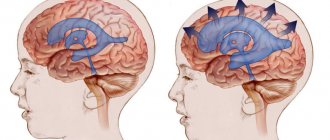Stuttering is a violation of the tempo and rhythm of speech organization, which is associated with a convulsive (contracted) state of the muscles that form speech. Stuttering is known as one of the ancient speech disorders. The essence of this condition, the mechanisms of its development, causes, symptoms and approaches to treatment differed significantly in different periods of the development of speech therapy. Different views on this problem are due to different levels of science, teachings and schools dealing with this condition. In this article we will approach this topic from the perspective of modern teachings and achievements in the field of treatment of this condition.
Stuttering is known as one of the ancient speech disorders.
Causes of stuttering
There are 2 types of causes of stuttering. The former create a predisposition, the so-called “soil” for the development of the disease. The second group of reasons are “impetuses” to development, reasons.
Predisposing reasons
A combination of one of the following unfavorable conditions and a strong irritant (stress) is enough for the development of stuttering in a child.
A lot depends on the parents. If parents have the so-called Neurotic burden, which includes infectious, neurological and other diseases that negatively affect the functions of the nervous system, then all these factors can affect the child. Infections can be transmitted, and increased irritability can negatively affect the child’s mental state.
A lot depends on the parents.
When we evaluate developmental causes, it is important to look back to the period before, during and after childbirth. It is necessary to study the presence of birth injuries, infections, asphyxia and other factors that may affect the functioning of the brain. It is equally important to study the child’s family, because it is likely that among his blood relatives there may be people who stutter.
As for the child’s body, it is necessary to pay attention to its neurogenic characteristics and constitutional predisposition. These reasons include increased vulnerability and irritability, nightmares, enuresis, and diseases of the nervous system. Of course, we should not forget that a child may go through a stage in which age-related anatomical and physiological features of the central nervous system are present.
And of course, one of the most important things is that the child should not feel disadvantaged in the family, should not face alienation and misunderstanding on the part of the parents. It is important to ensure that the baby has enough positive emotions that he receives with his parents.
Producing causes
Quite often, stuttering develops against the background of organic (physical) diseases of the brain, which lead to disturbances in the speech-motor system.
Stuttering often develops against the background of infectious and physical diseases.
Infectious processes accompanied by the development of encephalitis and meningitis can lead to depletion of the nervous system and weaken the centers responsible for the movements of the speech-motor apparatus (measles, whooping cough, meningococcal infection).
Many ENT diseases (laryngitis, tonsillitis, sinusitis) lead to changes in the timbre and intonation of the voice, which also negatively affects the formation of speech.
Mental trauma accompanied by severe fear or fright.
A significant reason is inadequate upbringing of the child. This may include increased demands from the child in learning, the formation of the phenomenon of “exemplary” behavior.
Negative, negative attitude of parents towards the child (severity, anger, strictness).
An equally important reason is the child’s unexpected shock, which can be both positive and negative (“excessive” excitement, stressful situations at school, stressful situations in the family).
Simultaneous acquisition of different languages at an early age causes stuttering, usually in one language
In the case of a child learning several languages at an early age, which leads to increased load on various centers of the brain.
Imitating people who stutter.
Forms of stuttering
There are two forms of this speech disorder - neurotic and neurosis-like. The second is associated with dysfunction of the brain, while speech disorders always appear, regardless of the emotional state of the child. Unlike neurosis-like stuttering, neurotic stuttering appears only in a stressful situation and disappears or significantly weakens in a calm state. Such patients are characterized by logophobia - fear of pronunciation; they avoid conversations in unusual surroundings in every possible way. The type of stuttering (logoneurosis) can be determined by history and encephalogram.
Based on the nature of the violations, a distinction is made between the tonic type, in which the stutterer stretches out vowels or pauses, and the clonic type, which consists of repeating words, syllables or sounds. A combination of these types is often observed. In any case, speech is accompanied by spasms of the muscles of the mouth and larynx; the pathological process can spread to the respiratory muscles, causing a lack of air; tics, involuntary movements and grimaces often occur.
Symptoms
The main symptom of stuttering is cramps (abnormal contraction of the muscles of the speech apparatus) during speech. Their duration can take from 1-2 to 12-13 seconds, and in some severe cases reach 80 seconds or more.
Be attentive to your child and help him overcome or prevent the development of stuttering.
In children with stuttering, the sequence in the pronunciation of individual words is also disrupted; children lose their train of thought due to pronounced pauses, experience emotional distress and, as a result, acquire character traits of a “defective” person.
Let us dwell in more detail on the feeling of inferiority, since this symptom largely determines the further development and course of stuttering in a child. This feeling is also called “painful fixation” of a stutterer.
There are three degrees of “painful fixation”:
- First Art. (children feel comfortable, and they do not experience embarrassment or shame due to a speech defect).
- Second Art. (children lose a sense of comfort, experience moderate embarrassment, shame due to a speech defect, and try to disguise it)..
- Third Art. (pronounced concentration on their speech impediment, experience severe embarrassment, shame. Usually this degree is noted in children of senior school age).
The effectiveness of treatment for children who stutter directly depends on the degree of “painful fixation.” The higher the fixity, the less favorable the prognosis for speech therapy work.
There are three degrees of stuttering:
- minor - stuttering appears only during excitement (expressed emotions) and during rapid speech.
- moderate - do not stutter at rest and in normal surroundings; Only when emotions are expressed does stuttering appear.
- pronounced - they stutter constantly.
What to do if a child stutters?
Treatment of stuttering in children is carried out jointly by a psychologist, speech therapist and pediatrician.
The pediatrician’s task is to treat concomitant pathologies, strengthen the body, and prevent colds, especially diseases of the ear and vocal cords. It is necessary to treat chronic diseases and achieve stable, long-term remission. It is important to prescribe physiotherapeutic procedures for the child: swimming pool, massage, electric sleep.
A psychotherapist helps a child cope with his illness , helps him feel comfortable in any situation, helps him not to be afraid of communicating with people, helps the child realize that he is not inferior and is no different from the peers around him. Classes with a psychologist are necessarily held together with parents, who also help the child cope with the disease.
Classes with a speech therapist help the child cope with the disease faster.
Classes with a speech therapist
Classes are conducted according to a certain system, have stages and sequence. First, children learn the correct narrative presentation of a text. They read poems and retell homework. The peculiarity of this story is that the child feels comfortable, he knows that he will not be graded, and no one will laugh at him. Children’s speech during such activities is measured, calm, without changing intonation. When it is possible to achieve the absence of stuttering during a narrative story, the child is asked to bring emotional coloring to the speech: somewhere to raise his voice, somewhere to make an accent, somewhere to make a theatrical pause.
During the classes, various life situations in which a child may find himself are simulated. This helps him cope with his stuttering outside the speech therapist's office.
Be sure to keep your child in a good mood . The child should receive rewards for his achievements. Even if it is just praise, the child should feel the significance of his achievements.
Examples of correct speech should be present in classes. This could be the speech of a speech therapist, the conversation of other children who have already successfully completed the course of treatment.
A very important section in the treatment of children with stuttering is the use of a technique such as speech therapy rhythm . This technique includes exercises for the vocal and facial muscles, outdoor games, exercises and games with singing, and round dances.
It is imperative to give your child homework assignments, since treatment should not be limited only to the speech therapist’s office.
Do not, under any circumstances, raise your voice to your child , this can only worsen the stuttering.
The use of modern speech therapy methods helps the child quickly cope with the disease and lead a full life. It is very important to try to cope with stuttering before the child enters school (and for this you need to contact a speech therapist as early as possible and strictly follow all his instructions), since the school curriculum includes public speaking when answering questions from the teacher, which can become a big problem for child.
Overcoming stuttering becomes more difficult with age due to the strengthening of incorrect speech skills and related disorders. Therefore, the sooner treatment is started, the better the result will be. As a result of treatment, 70% of preschool children completely recover from stuttering ; 30% have residual effects; 20% of schoolchildren are completely cured ; 80% had varying degrees of speech improvement.
Services and prices
Primary appointment (examination, consultation) with a speech therapist
2,200 rub.
Repeated appointment (examination, consultation) with a speech therapist
2,100 rub.
Supplement for conducting a consultation or speech therapy session at home (in addition to the consultation or any speech therapist session)
RUB 4,660
Speech therapy session for children with stuttering
2,500 rub.
Survey
The examination of such children should include consultation with specialists:
- speech therapist;
- neurologist;
- psychologist;
- if necessary, consult other specialists.
The main specialist involved in the treatment of stuttering in children is a speech therapist.
In the process of working with children, the speech therapist uses various textbooks, poems, fairy tales, and selects special toys.
The purpose of the examination is to determine the frequency, source of occurrence and form of speech spasms. The degree of stuttering and the patient’s speech abilities are also assessed. The second plan, if any, indicates accompanying speech defects.
At the end of the conversation with the patient, the speech therapist formulates a final conclusion.
Causes
We will list the most common causes of stuttering in children aged 3 to 5 years. This pathology can occur for a number of reasons, be congenital or acquired.
Congenital factors for the development of the defect include:
- Various types of pathologies during pregnancy and gestation (oxygen starvation, infectious processes, etc.).
- Problems during the birth period (injuries, early birth, etc.).
- Genetic predisposition along one of the lines of kinship.
- Individual personality characteristics, characteristics of the nervous system (predominance of excitability processes, hyperanxiety).
Acquired stuttering is provoked by:
- Shock trauma. Death of a parent or significant loved one. Chronic stress.
- Psychological trauma. Physical or psychological abuse. Bullying. Humiliation from peers or family.
- Physiological processes. Features of the development of the child’s cerebral hemispheres; this reason can be exclusively an age-related feature and resolve itself as the child grows up.
- Past illnesses. One of the causes of speech impairment can also be previous infectious diseases (meningitis, encephalopathy, etc.). Seasonal acute respiratory viral infections, influenza and other upper respiratory tract diseases. Speech may also be impaired due to various types of injuries, bruises, concussions due to falls or accidents. Diagnosed diabetes mellitus can also cause stuttering in children.
- False stuttering. This kind of stuttering can be inherited from one of your loved ones. In this case, the child may not have true pathologies. This type of stuttering is especially typical for young children who are at the age of learning speech through copying.
- Attempts to retrain a child to be left-handed. Attempts to forcefully teach a left-handed child to write with his right hand can cause severe disturbances in the child’s speech. Children who write with their left hand are quite sensitive and sensitive.
- An alarming situation at home. Contemplating conflict situations between family members can negatively affect the child’s nervous system, resulting in speech impairment in the form of stuttering.
- Authoritarian parenting. Violation of a child's personal boundaries, physical punishment and intimidation of a child often cause logoneurosis.
- Mental fatigue. Tasks beyond the child’s strength, without taking into account the child’s age capabilities, both physical and mental. The predominance of educational activities over gaming. An overabundance of section clubs, a lack of time and free space for the child’s self-organized activities.
- ·Disturbance of sleep patterns, lack of sleep.
Among the causes of stuttering there are a number of psychosomatic factors that cause stuttering:
- · Hysterical type: a sharp change in conditions in a social situation (for example, in the family everyone was allowed to do whatever he wanted, but when he went to kindergarten, the child was faced with prohibitions, restrictions and rules);
- Neurasthenic type: humiliation of the child’s personality and characteristics, lack of praise, comparison with other children;
- Psychasthenic type: parental overprotection, devaluation and lack of faith in the child that he can cope and succeed, can also lead to reluctance to speak and severe disturbances in the child’s speech.
Treatment and prognosis
Today, the treatment of such children includes not only medical, but also pedagogical influence.
- Use of medications. A huge number of different groups of drugs can be used in the treatment of stuttering. Let's look at the most common of them:
- 1. Nootropics (piracetam, pantogam, pantocalcin, phenibut).
- 2. Sedatives (valerian, phenibut, glycine, persen, afobazole, adaptol, novo passit). It is worth noting that many nootropics also combine sedative effects.
- 3. Vitamins, especially B vitamins (combilipen, compligam B, larigama).
One of the treatment methods is sessions with a speech therapist.
There are a huge number of methods for overcoming stuttering in children, as well as groups of drugs that can be used in individual cases. Many of you are interested in the question: “Can we help a child on our own, at home and without running to doctors? Is it possible to completely cure stuttering in a child? There are separate techniques that allow you to improve pronunciation and so on by practicing at home, but they are also selected by a specialist. As for the forecast, there is no clear statement. It can be assumed that the younger the child, the more cheerful and positive his behavior, the fewer concomitant psychopathological disorders, the weaker the manifestations of seizures, the better the prognosis.
Stuttering correction
The goal of correction for stuttering is to develop a new stereotype of speech production. Comprehensive treatment of stuttering leads to the best results in eliminating this speech defect.
Below we have described the most effective and common methods of treating and correcting stuttering in children.
Massage
Massage is a must for stuttering. Massage is an additional way to correct and treat stuttering. Massage is needed to improve blood circulation in the brain structures that are responsible for the motor reactions of the speech apparatus.
There are several effective massage techniques for stuttering:
Traditional massage
This type of massage is used for certain areas of the body, it is performed by an experienced massage therapist, using certain techniques and techniques depending on the goals and objectives of the massage. This type of massage helps to relax the muscles of the speech apparatus and the muscles adjacent to it. In a person who stutters, hypertonicity of the muscles of the neck and upper shoulder girdle can often be observed. Having achieved relaxation of these zones, the root of the tongue is relaxed and, accordingly, the tone of the muscles of the lower jaw decreases.
A relaxing massage of the head, cervical region, collar area, back, chest and shoulders has a positive effect on articulation.
Probe massage
Probe massage technique is performed using special probes. The massage has a rather harsh effect, therefore it is used in the complex treatment of stuttering in children over 4 years old. Contraindications to the probe massage technique is a tendency to epilepsy and seizures!
Acupressure
Massage relieves excessive excitability and anxiety, helps relax the speech center. Parents can do this type of massage on their own, since the manipulations in this type of massage are very simple. Having mastered the technique of acupressure, you can influence muscles that are in hypertonicity and, by acting on certain segments, achieve relaxation of the tongue and jaw muscles.
Segmental massage
This massage is aimed at directly influencing the muscle responsible for speech. The effectiveness of this type of massage is possible when performed systematically.
Breathing exercises . Breathing exercises are useful for the treatment of any type of stuttering, as well as its prevention at an early age in children. Breathing exercises are a set of special exercises for relaxing and toning the muscles of the speech apparatus. With the help of simple tasks, the child learns to breathe correctly, masters the rhythm and pace of inhalations and exhalations.
Classes with a speech therapist-defectologist
Classes with a speech therapist are an integral part of eliminating stuttering in children. Classes with a speech therapist help:
- eliminating disturbances in the tempo and rhythm of speech;
- development of motor functions;
- development of coordination of words and rhythmic movement;
- formation of phonation (speech) breathing;
- development of fluency of speech in its various forms;
- development of intonation characteristics of speech.
Medicines
Drug treatment of stuttering is necessary for severe clinical symptoms and for stuttering of organic origin. Also, drug treatment is necessary for stuttering resulting from an underlying disease or a long course of stuttering. The purpose of prescribing medications for stuttering:
- Reducing the frequency of speech muscle spasms.
- Stimulation of the parts of the brain responsible for speech.
- Reducing spasticity of the muscles involved in speech activity.
- Normalization of emotional state.
Comparison of neurotic and neurosis-like forms of stuttering in children
Neurotic stuttering in children occurs as a result of mental trauma, so the disease occurs almost suddenly. With such stuttering, parents can accurately say when and why the child developed the pathology. Such stuttering usually appears at the age of 2-6 years, when there is already developed phrasal speech.
In such children, speech activity decreases due to the fact that they are afraid to talk. They fixate on complex sounds. In this case, respiratory and vocal spasms may be observed. They have a sound pronunciation disorder, but at the same time they develop normally in the lexical and grammatical sphere. During a conversation, these children's nose wings widen. In this form, stuttering is wave-like in nature, that is, speech deteriorates significantly during times of stress.
Neurosis-like stuttering develops gradually as a result of damage to the central nervous system. Such stuttering is not associated with any events, so parents often cannot find the cause of the disorder. Neurosis-like stuttering begins to appear at 3-4 years of age, at the time of the formation of phrasal speech.
Children suffering from this form of stuttering are sociable and active, and are not afraid of their disorder. Stuttering in this case occurs due to articulatory spasms. Such children speak monotonously, quickly and inexpressively. With neurosis-like stuttering, there are also disturbances in the lexico-grammatical aspect of speech. Gross motor skills are often impaired, so children may be overly stiff or clumsy. Their facial expressions are weak and their handwriting is illegible. Children suffering from neurosis-like stuttering often have learning problems. This type of stuttering has a stable course; exacerbations can occur infrequently - mainly due to overwork and heavy speech loads. When conducting neurological studies, lesions of the central nervous system are detected, and when conducting an EEG - high convulsive readiness.
Diagnostics
The diagnosis is made after a complete examination of the child with the participation of a speech therapist and a neurologist. If necessary, other specialists are involved: defectologist, psychologist, psychotherapist.
The following diagnostic stages are distinguished:
- Determining the tempo, rhythm and fluency of speech, the presence of deviations in these indicators;
- Identification of a traumatic situation;
- The exclusion of another form of stuttering - neurosis-like, which occurs after a traumatic brain injury and other lesions of the central nervous system, is accompanied by a change in personality.
To clarify the diagnosis, an EEG, REG, MRI or CT scan is performed. Hardware diagnostic methods make it possible to identify structural or functional changes in the central nervous system, if any, and to exclude or confirm neurological problems.
Symptoms of neurotic stuttering
All forms of stuttering are characterized by convulsions during the speech act, lasting from a fraction of a second to a minute and a half. Convulsions vary in form (tonic and clonic), frequency and location (vocal, respiratory and articulatory). With the clonic type, multiple repetitions of sounds and syllables are observed; with tonic - long pauses and drawn-out pronunciation of sounds and syllables. There is also a mixed type with a combination of signs of both logoneurosis. When stuttering, disorders occur not only in speech, but also in general motor skills (tic, myoclonal convulsions). In order to distract attention and to facilitate their speech, people who stutter resort to various tricks: movements of the head, limbs, swaying.
Usually young children do not notice their illness and do not pay attention to it. But as they grow older, their behavior goes through several stages. Usually, upon arrival at school, a relapse of stuttering begins, since with an increase in workload and an expansion of the social circle, an increase in speech and mental tension occurs. The child begins to develop logophobia and develops personality traits such as isolation and fear of communication. In adolescence, these qualities are especially pronounced. For some, this causes a sharp restriction of contacts; they speak little, simplifying their speech to the simplest, easy-to-pronounce phrases, while others behave defiantly and aggressively (overcompensation).
The neurotic form of stuttering has its own characteristics. So, for the same person it can vary in the intensity of intermittent speech. Situational dependence is especially noticeable. In a calm home environment among close and loving people, stuttering manifests itself so little that it becomes almost invisible. On the contrary, when communicating with strangers, having to speak in front of an audience, or at a responsible meeting, there is a sharp increase in stuttering symptoms.
Communication with people suffering from severe stuttering is difficult and painful for both parties. Their speech is accompanied by various movements of the head, body, arms and legs, increased speech motor skills (biting lips, smacking, silent articulation of sounds), which makes a difficult impression.
What is logoneurosis in children
Childhood logoneurosis is a neurotic condition in a child in which there is a disturbance in the tempo, smoothness, rhythm of speech and breathing.
Occurs as a result of severe emotional shock.
When repeating individual syllables and sounds, sudden stops of speech occur, a condition called logoneurosis. In children, the reasons can be hidden for quite a long time.
Logoneuroses in children are: tonic, when there is a sudden and prolonged stop in speech. Children's logoneurosis can also be clonic, when there is a repetition of individual syllables, sounds or words, observed at the beginning of a conversation.
The main provoking factors of logoneurosis are overwork and stress. Ordinary troubles at school, disruption of the daily routine, the spring - autumn season, adolescence can become triggering factors in the development of stuttering.










